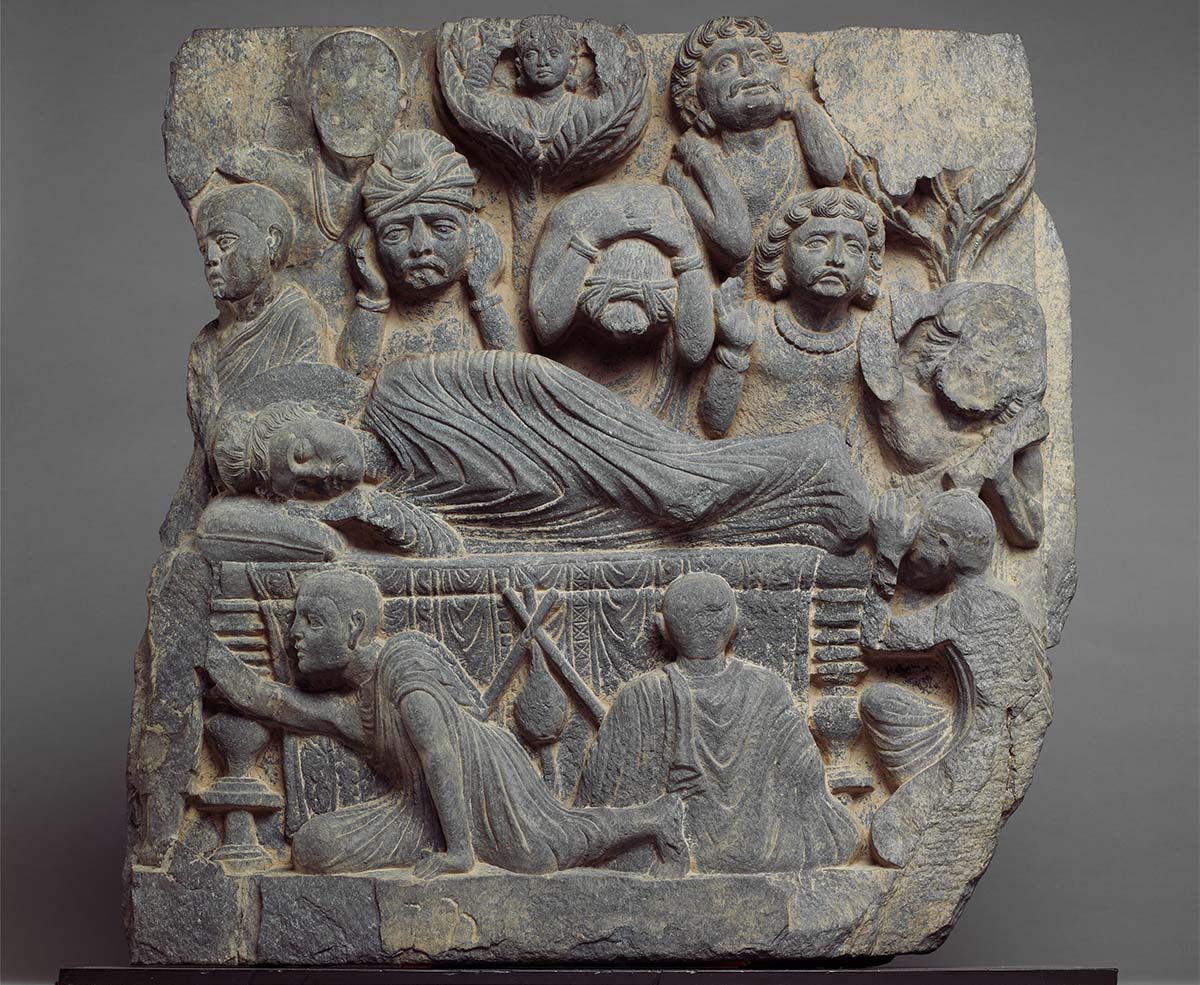ARTICLE
Anthropomorphic Buddha
In images of the standing Buddha, the Hellenistic influence is most pronounced in the naturalistic modelling of the robes, his slight contrapposto posture and his bare feet. The seated or meditating Buddha, however, sits cross-legged with his feet either tucked under him or in padmasana. The palms of his hands and soles of his feet are typically marked with the chakra or the swastika. A rare variation of the seated Buddha is the fasting Buddha, an extremely emaciated figure intended to represent the Shakyamuni Buddha after the seven weeks for which he is believed to have meditated without pause. The introduction of the anthropomorphised Buddha further paved the way for narrative reliefs depicting the Jataka tales, particularly his life as Siddhartha, replete with iconography borrowed from both the Graeco-Roman and Hindu traditions. These reliefs line the dome and the base of several stupas from the first and second centuries CE. Several Kushan rulers also associated themselves with the Buddha and commissioned bodhisattva statues in their likeness in order to grant a divine legitimacy to their reign. The standing anthropomorphic Buddha, for instance, was stamped on gold coins during the reign of the emperor Kanishka, who was himself depicted on the obverse.
In Mathura, the anthropomorphic Buddha emerged by the early second century. Sculpted from red sandstone in high relief, the Mathura Buddhas seem to be modified versions of yakshas – nature and guardian deities whose sculptures had been produced in the region since the second century BCE – with robes replacing the dhoti and paryataka. The Mathura version featured full lips, broad shoulders, a thick neck, a spiral ushnisha and robes rendered with shallow grooves, as though to indicate a thin, translucent fabric. A subtle but significant characteristic of the early Mathura Buddhas is their gaze, which is directed at the viewer, unlike the meditative gaze of the Gandhara Buddhas. Standing Mathura Buddhas were not shown in contrapposto, suggesting a significantly reduced Greek influence. In other respects, such as the frequent appearance of the abhaya mudra, the presence of the urna and the benevolent expression, the Mathura Buddha is very similar to its Gandharan counterpart.
By the fourth century, when both centres of Buddhist art and most areas with a Buddhist following fell under Gupta rule, the Gandhara and Mathura styles began to merge. Buddhas made in this period are a clear amalgamation of the physical proportions of the Gandhara Buddhas and the drapery of the Mathura style. The ushnisha, for example, was now considered a cranial protrusion covered in a layer of thick curly hair or dried snails, rather than a top knot of curly hair, although visually it remained the same as that of the Gandhara Buddha.
Over the centuries, the Gupta version spread across Asia as the standard image of the Buddha, with variations occurring from region to region.
Bibliography
Our website is currently undergoing maintenance and re-design, due to which we have had to take down some of our bibliographies. While these will be re-published shortly, you can request references for specific articles by writing to hellomapacademy@map-india.org.









